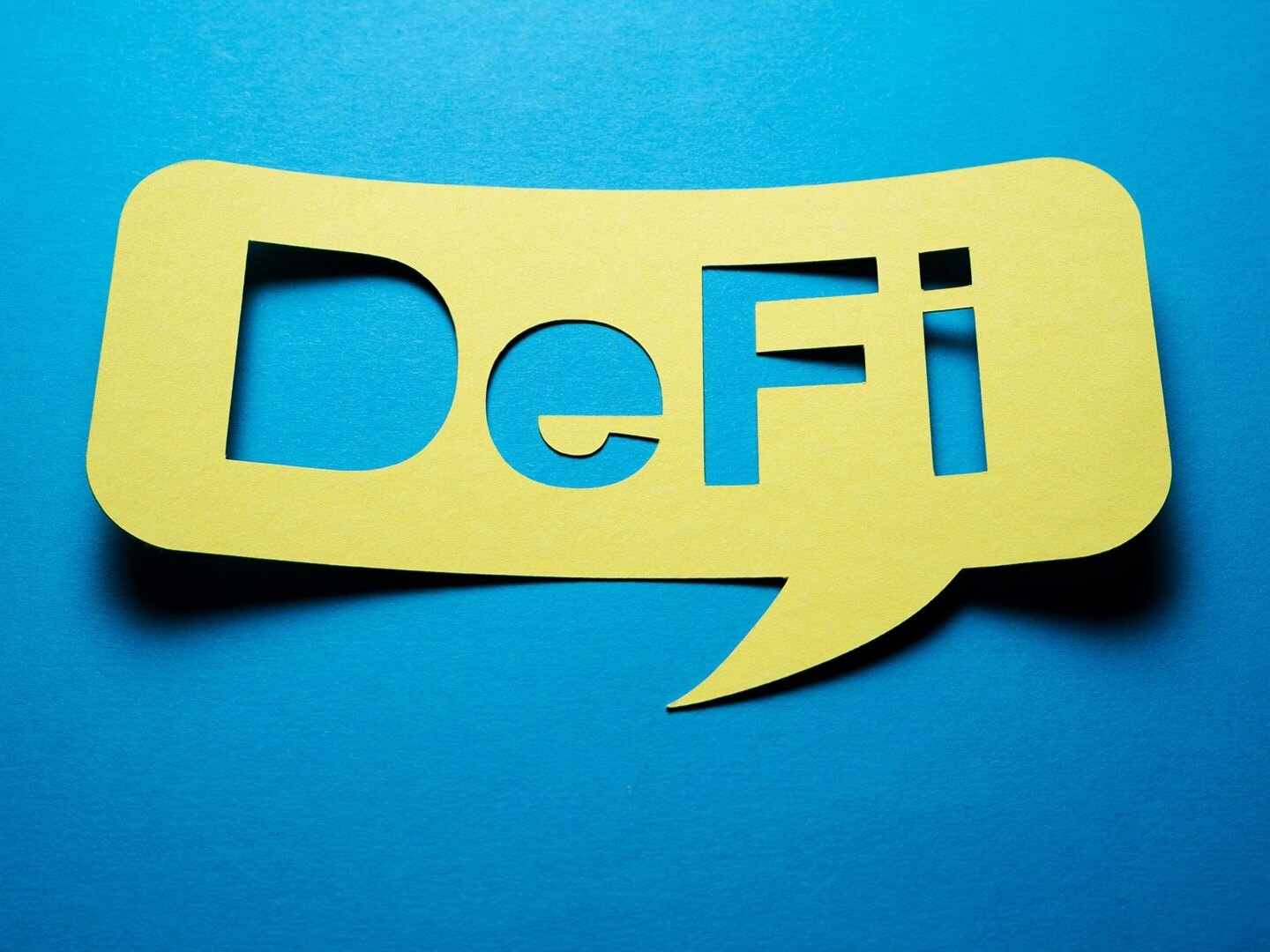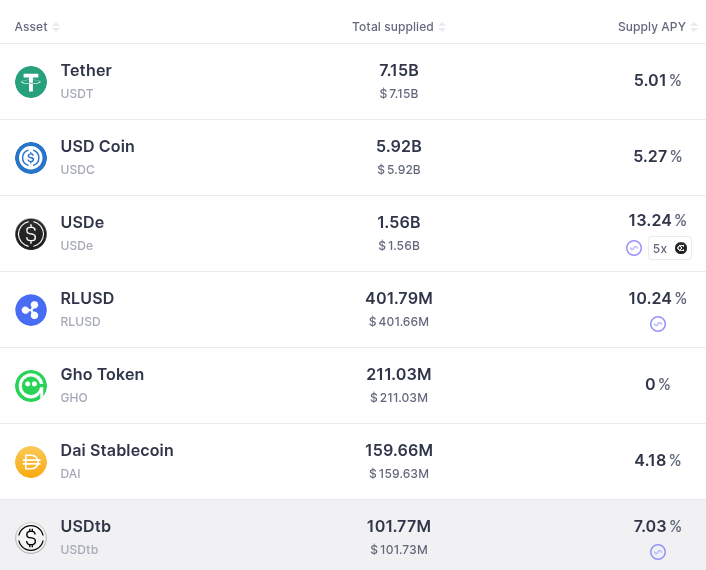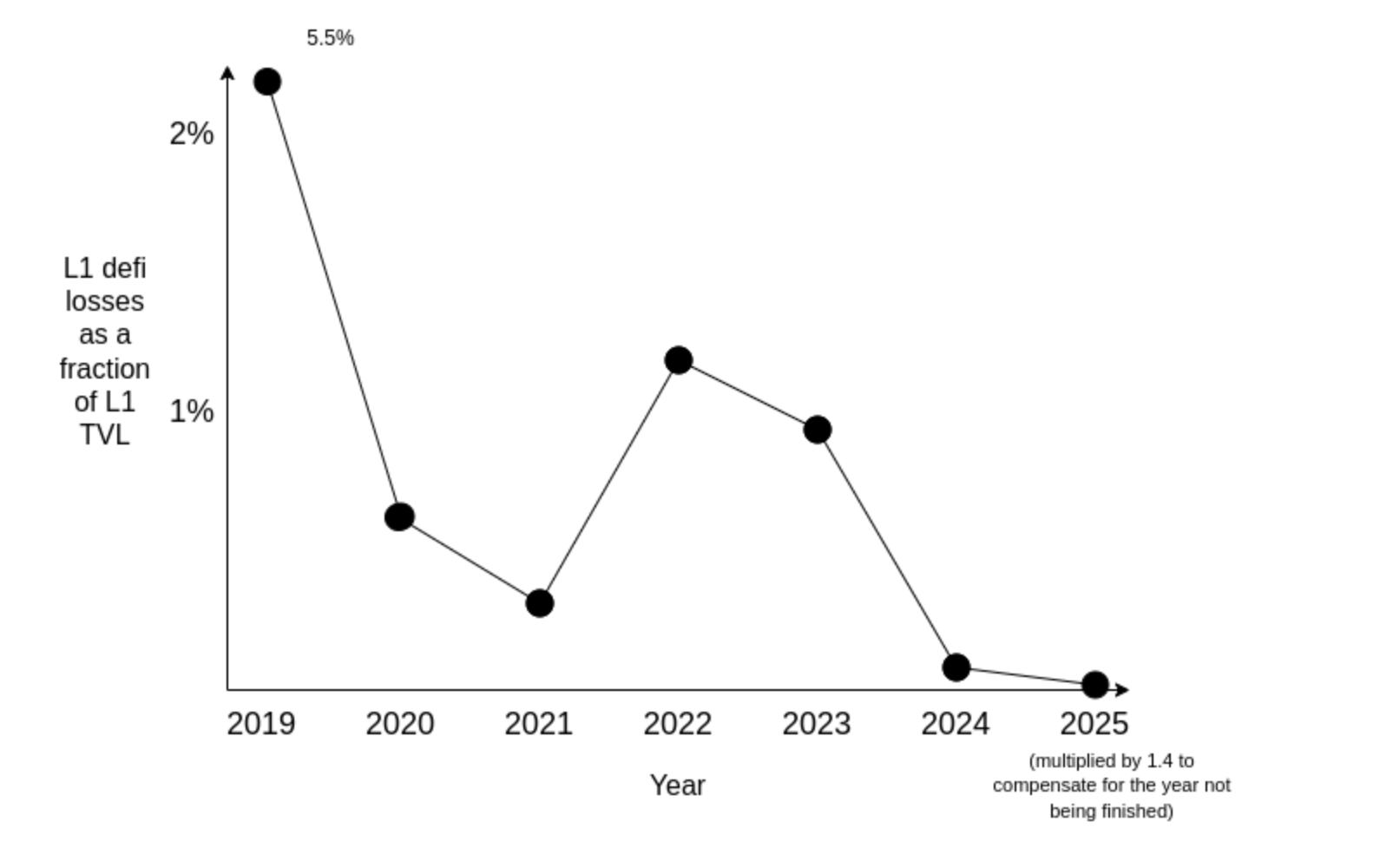Original Author: Vitalik
Original Translation by: CryptoLeo (@LeoAndCrypto_)

Editor's Note: Vitalik has always had a "volatile and generally pessimistic" attitude towards DeFi. He has stated that DeFi should not pursue high yields, but he has also expressed optimism about applications like Aave. Many believe he does not fully understand DeFi. However, today Vitalik has changed his stance and published content on low-risk DeFi, explaining that his previous skepticism was also due to the circumstances at the time. Now, as the risks in the DeFi space gradually decrease and regulations become more lenient, it is a good time for Ethereum to embrace DeFi, which can create better synergies with some non-financial derivative applications.
Odaily Planet Daily has translated this latest article as follows:
For a long time, the Ethereum community has faced an important contradiction: the conflict between "applications that can generate enough economic activity to sustain the entire ecosystem, whether maintaining the value of ETH or supporting the value of individual projects" and "applications that can fulfill the original intentions of people joining Ethereum."
Historically, these two categories have been very disconnected: the former includes a combination of NFTs, Memecoins, and a type of DeFi supported by temporary or recursive forces: people borrow to obtain incentives provided by the protocol or form a circular argument: "ETH is valuable because people use the Ethereum chain to buy, sell, and leverage trade ETH." Meanwhile, there are also non-financial and semi-financial applications (such as Lens, Farcaster, ENS, Polymarket, Seer, privacy protocols) that are very attractive but have extremely low usage rates, or the funds (or other forms of economic activity) spent by users are too little to support the $500 billion economy of ETH.
This disconnect has led to many conflicts within the community, and much of the community's motivation stems from a theoretical hope that an application can emerge that satisfies both conditions. In this article, I will argue that as of this year, Ethereum has such an application, which is as significant to Ethereum as search is to Google: low-risk DeFi aims to democratize access to valuable asset classes (such as major currencies with competitive interest rates, stocks, and bonds) for payments and savings on a global scale. 
Image Source: Aave
The analogy between low-risk DeFi on Ethereum and Google Search is as follows. Google has made many interesting and valuable contributions to the world: the Chromium series of browsers, Pixel phones, AI work including the open-source Gemini model, the Go language, and more. However, in terms of revenue generation, they are not very profitable and may even be operating at a loss. In contrast, Google's largest source of income is search and advertising. Low-risk DeFi can play a similar role for Ethereum. Other applications (including non-financial and more experimental applications) are crucial to Ethereum's role in the world and its culture, but they do not need to be viewed as revenue sources.
In fact, I hope Ethereum can do better than Google. Google often loses its way due to criticism, becoming like the anti-social profit-maximizing companies it tries to replace. The decentralized ethos of Ethereum is deeply rooted in its technical and social aspects, and I believe that low-risk DeFi use cases establish a strong consistency between "doing good" and "doing well," a consistency that is absent in the advertising realm.
Why Low-Risk DeFi?
What I mean by "low-risk DeFi" includes both the basic functions of payments and savings, as well as easily understandable tools like synthetic assets and fully collateralized lending, along with the ability to exchange these assets.
There are two reasons to focus on these applications:
These applications provide irreplaceable value to Ethereum and its users;
These applications culturally align with the goals of the Ethereum community, both at the application level and in the technical characteristics of L1.
Why Does DeFi Have Value Now?
Historically, I have been skeptical of DeFi because it seemed to offer no substantial services; rather, its main "selling point" appeared to be making money through trading highly speculative tokens (the highest single-day fee revenue for Ethereum came from a poorly designed BAYC otherdeeds auction) or earning 10% to 30% returns through liquidity mining incentives.
One reason for this is regulatory barriers. Gary Gensler and others should be severely criticized for creating a regulatory environment where the less useful your application is, the safer it is; the more transparent your actions are, and the clearer the assurances you provide to investors, the more likely you are to be considered a "security."
Another reason is that in the early stages, the risks (protocol code vulnerabilities, oracle risks, general unknown risks) were too high, making it difficult to achieve more sustainable use cases. If the risks are high, then the only applications worth adopting must be those with higher returns, which can only come from unsustainable subsidies or speculation.
However, over time, the security of protocols has gradually improved, and risks have decreased.

Ethereum DeFi's Decline
DeFi attacks and loss events continue to occur. However, these events are gradually being pushed to the more peripheral areas of the ecosystem—a place where users are more experimental and speculative. Currently, more robust core applications are forming. Although tail risks that cannot be eliminated still exist, such tail risks also exist in TradFi—given the increasing global political instability, for many people worldwide, the tail risks of TradFi now exceed those of DeFi. In the long run, it is foreseeable that the transparency and automated execution of a mature DeFi ecosystem will make it more stable than traditional finance.
Who does all this matter to? Essentially, it is those individuals and businesses that want to enter the global market to buy, hold, and trade mainstream assets, but for whom there are no reliable traditional financial channels to achieve these goals. Cryptocurrencies cannot sustainably create higher yields, but they do have a magical quality that allows existing economic opportunities worldwide to be accessed without permission.
Why Does Low-Risk DeFi Culturally Align with the Goals of the Ethereum Community?
Low-risk DeFi has several excellent characteristics that make it an ideal choice:
- By using ETH as collateral and paying high Gas fees, it economically contributes to the Ethereum ecosystem and its tokens;
- It has a clear, valuable noble purpose: enabling people to engage in economic interactions and wealth accumulation globally without permission;
- It does not create improper incentives for Ethereum L1 (for example, becoming overly centralized in pursuit of high-frequency trading efficiency, which is more suitable for L2).
These are some very good attributes.
Returning to the Google analogy, a major flaw in its incentive alignment mechanism is that advertising revenue drives the company to collect as much data as possible from users and retain ownership of that data. This contradicts the open-source and win-win spirit (i.e., mutual benefit) that historically motivated its more idealistic pursuits. For Ethereum, the cost of this inconsistency is even higher because Ethereum is a decentralized ecosystem, so any activity on Ethereum cannot be a decision made by a few behind the scenes; it must be viable as a cultural focal point.
Revenue-generating projects may not be the most innovative or exciting applications of Ethereum, but at least they are not perceived as unethical or embarrassing. If the largest application in the Ethereum ecosystem is a political meme coin, then you cannot seriously claim to be interested in that ecosystem. Low-risk DeFi aims to achieve global permissionless payments and optimal savings opportunities, representing a form of finance that is actively changing the world, as many in impoverished regions can attest.
What Can Low-Risk DeFi Evolve Into?
Another important characteristic of low-risk DeFi is its ability to naturally synergize with many more interesting applications in the future or evolve into these applications. Here are a few examples:
Once we have built a mature ecosystem of financial and non-financial activities on-chain (see: Balaji's concept of a ledger), exploring reputation-based, low-collateral lending becomes meaningful, which could become a stronger driver for financial inclusion. The low-risk DeFi we are building today, along with non-financial technologies like ZK proofs, contributes to this goal.
If prediction markets become more mature, we may start to see them used for hedging. If you hold stocks and believe that a certain global event may, on average, cause stock prices to rise, and the prediction market for that event is liquid and efficient, then betting on that event becomes a reasonable statistical hedging strategy. Running prediction markets and traditional DeFi on the same platform will make participating in such strategies easier.
Low-risk DeFi is often designed to make it easier for people to access dollars. However, most people enter the cryptocurrency space not to promote the adoption of dollars. Over time, we can begin to shift the ecosystem towards other stable forms of value: a basket of currencies, "stablecoin-like" directly based on the consumer price index, "personal tokens," etc. The low-risk DeFi we are building today, along with more experimental projects like Circles and various "stablecoin" projects, is aimed at making this outcome more likely.
For all the reasons above, I believe that focusing more on low-risk DeFi compared to Google's search and advertising business can help us economically sustain the ecosystem better while maintaining cultural and value consistency. Low-risk DeFi is already supporting the Ethereum economy and synergizing with many more experimental applications being built on Ethereum, which is a project we can all be proud of.
免责声明:本文章仅代表作者个人观点,不代表本平台的立场和观点。本文章仅供信息分享,不构成对任何人的任何投资建议。用户与作者之间的任何争议,与本平台无关。如网页中刊载的文章或图片涉及侵权,请提供相关的权利证明和身份证明发送邮件到support@aicoin.com,本平台相关工作人员将会进行核查。



